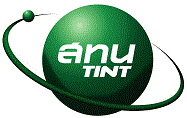PS10: การวิเคราะห์เชิงเรขาคณิตของการชนกันของนิวเคลียสที่พลังงานสูง
* รพพน พิชา1
1 สถาบันเทคโนโลยีนิวเคลียร์แห่งชาติ ( องค์การมหาชน) 16 ถ. วิภาวดีรังสิต จตุจักร กทม. 10900
โทรศัพท์ 02 5967600 โทรสาร 02 5790220 E-Mail: aeroppon@gmail.com
บทคัดย่อ
งานนี้เป็นการวิเคราะห์ลักษณะของการชนกันของไอออนหนักที่พลังงานสูง ที่มีขึ้นภายในเครื่องเร่งอนุภาค โดยใช้ พารามิเตอร์จากวรรณกรรมที่วัดมาจากการทดลองมาคำนวณหาลักษณะในเชิงเรขาคณิต เช่นความหนาแน่น ความซ้อนทับ และจำนวนนิวคลีออนที่เกี่ยวข้องในการชนแบบสมมาตรของไอออนหนักสามคู่ คือทองแดง -63 ทองคำ-197 และ ตะกั่ว-208 ซึ่งเป็นไอออนที่ใช้ทดลองที่เครื่องเร่งอนุภาค RHIC และ LHC เราจะมองถึงภาวะที่สำคัญต่อสมบัติของควาร์ก- กลูออน พลาสมา คือความหนาแน่นตอนเริ่มต้น ผลการคำนวณได้แสดงให้เห็นว่าเมื่อพลังงานเพิ่มจากพลังงานของ RHIC (100 GeV ต่อนิวคลีออน) ไปที่พลังงานของ LHC (2.75 TeV ต่อนิวคลีออน) ค่าการชนแบบสองนิวคลีออนจะมีค่าเพิ่มขึ้นอย่างน้อย เป็นเท่าตัว เนื่องด้วยค่าภาคตัดขวางการชนแบบไม่ยืดหยุ่นที่สูงขึ้นตามพลังงาน
คำสำคัญ : ทฤษฎีสัมพัทธภาพ ไอออนหนัก อนุภาค มิติ
PS10: Geometric Analysis of Relativistic Ion Collisions
* Roppon Picha 1
1 Thailand Institute of Nuclear Technology (Public Organization), 16 Vibhavadi Rangsit Rd. , Chatuchak, Bangkok 10900
Phone: 02 5967600, Fax: 0 2 5790220, E-Mail: aeroppon@gmail.com
Abstract
In this study, aspects regarding the geometry of heavy ion collisions were discussed and calculations of participating nucleons and collisions were made. The nuclei were modeled with a diffuse edge density function (Woods-Saxon). Collision systems of Cu-63, Au-197, and Pb-208, which are some of the species studied at RHIC and LHC high-energy particle colliders, were analyzed. From the input parameters, the number of binary collisions, which affects the number of particles produced in the event, was calculated. The calculations showed that as the energy of collision increases from RHIC (100 GeV/nucleon) to LHC (2.75 TeV/nucleon) energies, the number of collisions will increase by at least one fold, largely due to the large inelastic cross section at the high energy regime.
Keywords: Special Relativity, heavy ions, particles, geometry |


